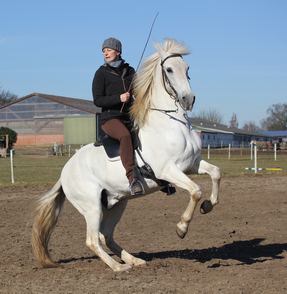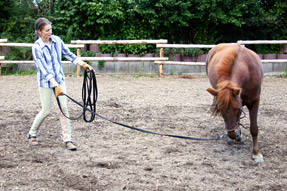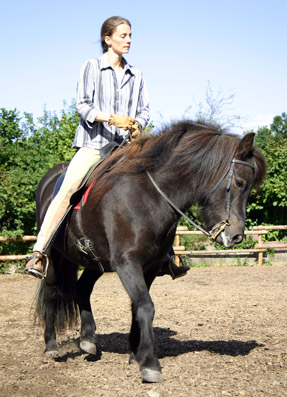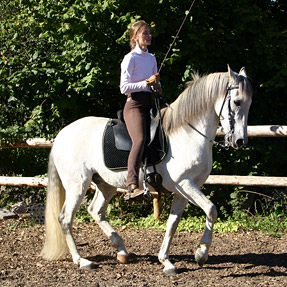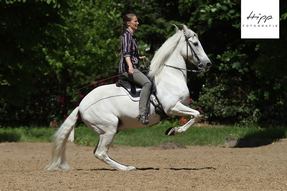|
|||||||||||
|
|||||||||||
| Lessons and Training
Antoine
Pluvinel Whether you call a Frisian your own and want to uncover the secret of the piaffe or whether you have a PRE with whom you strive for “Losgelassenheit” – my lessons concentrate on the autonomy of my students. You yourself are your horse’s trainer; hence it is you who define your own way together with your horse. My instructions give you ideas and suggestions for your own equestrian education and consequently form a proper basis for your horse’s training. This is the only way to ensure that you will be able to sustain and expand the results you achieved during training. For these reasons it is very important that the training does not correct you when a mistake is about to occur but rather gives you the opportunity to notice and correct your mistakes yourself. All of the horse’s training does not aim at preventing mistakes but allowing them. Only if your horse is allowed to make mistakes, you have another chance to explain what you want and encourage it to learn. This will bring you closer to your ideal: your horse moving almost by itself in a healthy state of Losgelassenheit. The horse should be so well educated and attuned to its rider that it moves completely on its own, as if it were a miracle of nature. This is true harmony between horse and rider. Antoine Pluvinel The second vital ingredient of my training is what I call positive reinforcement. When the content of the training is communicated quietly and positively to the horse, it will be able to understand them much better. This refers especially to the different ways of rewarding a horse, so it will realise that we are happy with its progress and work with us as avidly the next day. It is important that the horse enjoys following our commands. The rider achieves this by often rewarding it and bringing it back to the stable whenever he thinks it appropriate. Antoine Pluvinel Positive reinforcement however also includes not to ask too much of the horse during training, to explain new and difficult tasks with patience and to test them for a few minutes only. It is also important not to expect perfect results straightaway but to allow the horse to assemble the pieces of the puzzle on its own. I have to recommend the attitude not to demand more than half of what the horse is actually able to achieve... Horses resist not only because they lack skill or goodwill but also because they do not have sufficient power or stamina. Antoine Pluvinel Lessons Horse Training Gymnastic training on the ground and on the longe The principal goal of ground work is to be able to lead the horse as an alpha animal. You will learn the body language of a higher-ranking horse and how you can lead it on the right and left hand at a range of 1.5 meters using only body language, a cavesson, a longe line and a whip. Stopping and resuming by using body signals and cavesson will be the next step. We build upon ground work when starting longe work. You will learn how to form your horse by bending and positioning of the neck so that it will find a good equilibrium and be able to put weight on the inside hind leg. Moving forward the horse can be taught with a cavesson to perform the side movements (“versal” and “traversal”) so that its hind legs will be trained to move up underneath toward the centre of gravity. This particular training will be given to all young horses which have not been trained yet. Horses in need of correction will receive ground and longe training specific to their issues. Gymnastic training for horses used to riding Gymnastic training of physically handicapped horses |
|

